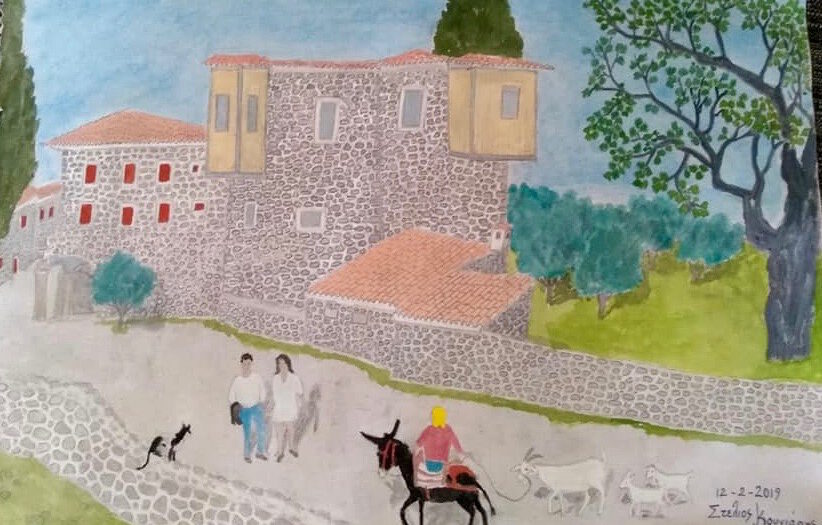When I was a child, there was no television and I could not yet read the papers. The first images I saw from far away exotic countries came with postcards. Like pictures of Spanish dancers (with real fabric skirts!), a donkey with a straw hat, mountains and bright blue lakes, a Laplander in colourful costume or a group of Greek women dressed for dancing?
In those days the postman would often bring cards from friends or family on holidays, but these days the post box remains pretty empty and you only get cards for your birthday or at Christmas. I have to admit that long ago when I was on holiday I took a long list of friends and family with me to whom I had to send a card and spent at least an afternoon writing them all. Now we send emails or we phone to let the people at home know our holiday is going well.
Old postcards now have become collectors items and sometimes represent a little piece of history. You now can find such relics of old Lesvos – including black and white pictures of Mytilini, or Agiasos – on the internet.
Theophilos Chatzimichaeli (known as Theophilos) was a painter born around 1870 in Varia (close to Mytilini). He died in 1934. Besides his artistic activity he worked as a doorman at the Greek Consulate in Izmir, as a sheperd in Pilion and in Volos he did all kinds of jobs. After spending some thirty years in foreign parts he returned to his home island where in the last five years of his life he painted walls, cafes and canvasses.
He was an eccentric man who was often teased by people. He loved history, especially the great warrior heroes. At carnival times he regularly dressed in a traditional kilt, as Alexander the Great, one of his Macedonian soldiers, or a hero of the Greek war of independence.
He took all the work he could get and painted theatre designs for theaters, and, in exchange for a meal, would do a mural on the wall of a café. You can still see his work in Pilion and on Lesvos in some lost cafes. The most colourful part of his life was when he lived in a hollow tree at Karini, near Agiasos.
However, so much of his art perished, or was lost, what remains is worth a fortune and is well regarded by international art dealers. This month there is an exhibition of his work in the Benaki Museum in Kolonaki, Athens, which has started people re-thinking Theophilos, the man, especially the long standing perception that his character was like his paintings – simple and naïve.
Already in his time there were postcards of the same subjects he painted in his ‘naïve’ style: people in traditional costume, rural scenes with shepherds, country girls or landscapes with villages which so often feature in his paintings. Art historian Maria Moschou wrote an article for Athens Plus (October 1) in which she wonders whether he was so naïve. Maybe he simply knew that people liked to see: heroes, street vendors or artisans.
I wonder what themes and subjects are popular these days? Besides beautifully photographed landscapes and city scenes there is a fashion for elderly Greek people with lined faces, long gone trades and crafts and, yes, people in traditional costumes which nobody wears anymore. So if Theophilos had been born a century later what would he have painted?
Would he have depicted cars traveling through the landscapes, or would he look for ones without signs of progress? Would he have painted scantily dressed tourists roaming the lanes of Molyvos and Petra, or would he have depicted Albanian workers on building sites dusted with white cement. Or maybe the old men sitting with their coffees all morning long in the cafenions? Would he have dared to paint half naked women?
Stelios Kouniaris of Molyvos, a contemporary equivalent of Theophilos, is not worried by near nakedness or cars. His work is studded with such images, not big in the foreground, but like stray cats and dogs, they wander through his pictures.
Both the works of Theophilos and of Stelios Kouniaris present a colourful vision of Greek life – nice souvenirs to take home – but for the work of Theophilos you have to make do with postcards, unless you are a real art collector willing to spend a tidy sum on an original. Stelios Kouniaris has not yes been discovered by the art market and can still be bought for reasonable prices, although in the castle of Molyvos where he works, there are already some postcards of his work on display. Send me a postcard, now!











